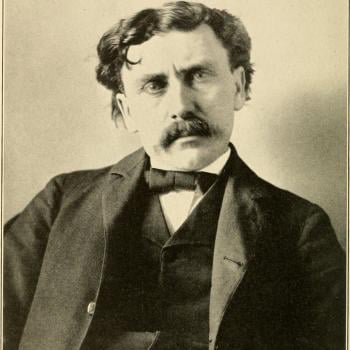I recently posted about the construction of historical memory, and the debate over whether such histories were onions or olives – that is, whether such ideas arose from a genuine core, or if they were wholly imagined.
Obviously, that can be a controversial issue, particularly in religious terms, but it is helpful to address it. Religions are after all masters (mistresses) of building traditions and memories. Not only do they stress traditions, but they usually give them an aura of antiquity, the suggestion of “this is what we’ve always done.” Religions never like admitting they begin at a specific point of time, still less within living memory.
There’s actually some fine scholarship on the construction of various world religions, as they were encountered by the West in the nineteenth century. Repeatedly we find that particular practices were very old, but the specific forms that the religion took in modern times was, well, modern. Japanese Shintoism, for instance, portrays itself as an immemorial religion of the land, but it was actually carved out in the eighteenth and nineteenth centuries.
We also look at Hinduism, which had such an impact when Americans first heard the adherents of this primeval faith in the 1890s – about fifty years after Hinduism took its modern shape, in response to successes by Christian missionaries. When modern Hindus present the Bhagavad Gita as the core one volume summary of their teaching, they are using a tactic formulated by Bengali reformers in the nineteenth century, who wanted to have a counterpart to the New Testament being handed out so freely by the Christians.
The Zen Buddhism that Americans discovered from the 1890s onwards was transmitted by Japanese teachers who had themselves been profoundly influenced by American Transcendentalism.
We can compare ideas in American Indian religion, particularly about sacred landscapes. The core theme is that particular tribes have “always been” more or less where they first appear in the historic record, and that they have “always” venerated particular mountains, rivers or natural features in that location. This autochthonous claim is even made by tribes that we know perfectly well moved to their present location relatively recently. The Navajo arrived in their southwestern homeland around the time that Columbus was setting sail, while the Lakota/Sioux probably had not even seen the Black Hills of Dakota before the nineteenth century. Nevertheless, modern activists hold that the respective sacred landscapes really have belonged to those tribes since time immemorial, perhaps since the Creation, and anyone who claims to the contrary is an Indian-hater. And as General Custer discovered, the Lakota fought desperately to keep whites out of their sacred Black Hills.
Obviously, we also find a lot of similar themes in the Judaeo-Christian tradition. The ancient Judaism of the seventh and sixth centuries BC did a magnificent job of back-projecting its radical new doctrine as into the mists of antiquity. (I recently posted about Israelite origins). Recalling the Native American experience, the ancient sacred mountain of the Jews, which was found far to the north, somehow got relocated to Zion.
So much of religious debate in Christian history has involved taking ideas and practices and trying to prove their antiquity, to root them in the earliest church. In modern times, even radical reformers seem to need such ancient roots, to prove for instance not just that women priests are a good idea, but that they really did exist in Early Christian times. This is one reason why modern reformers set such store by the various lost Christian gospels, as they provide plausible warrants for such ancient claims. It’s hard to admit that ideas are really new.
As an analogy, I cite the worst question you can ever ask a poet: “Is that a real poem, or did you write it yourself?” Similarly, is that a real doctrine, or was it invented recently? Is it an onion or an olive?
By the way, I’d like to thank Monty Python for the title of this posting.












